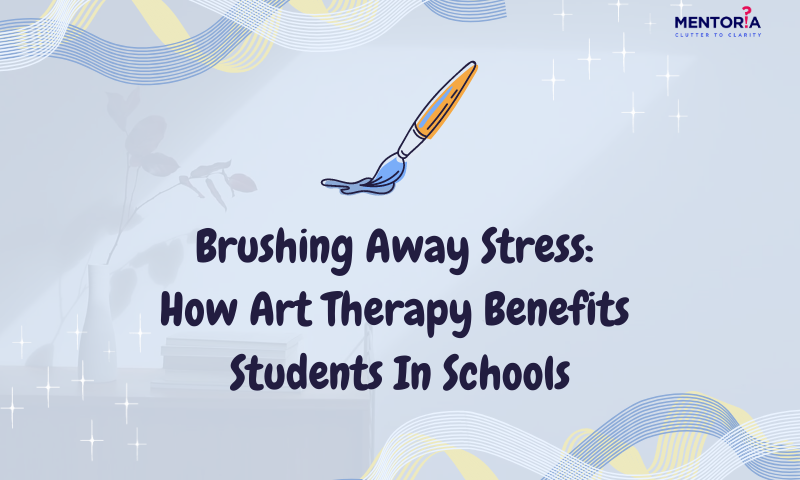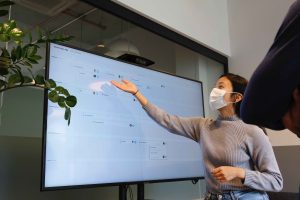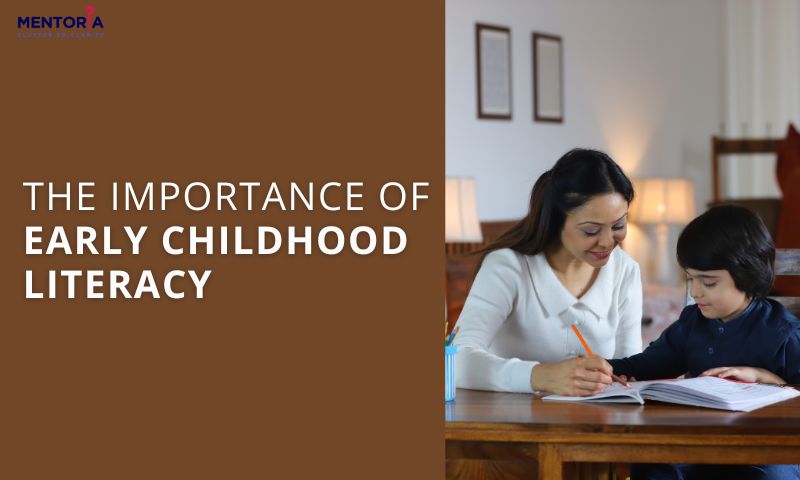Brushing Away Stress: How Art Therapy Benefits Students In Schools

Jump to Section
Art therapy has emerged as a powerful tool to enhance the well-being of students in schools, offering a creative outlet for self-expression and emotional exploration. Beyond traditional academic subjects, art therapy fosters personal growth, promotes self-awareness, and cultivates resilience. By engaging in artistic activities, students can develop crucial life skills, such as problem-solving, stress management, and effective communication. This holistic approach to education not only encourages individuality but also nurtures a supportive and inclusive environment where students can thrive.
Painting The Canvas Of Emotional Well-Being
Art therapy provides a safe space for students to express and process their emotions. Through engaging in artistic activities, students can explore and communicate their feelings, which might otherwise be challenging to express verbally. Painting, drawing, or sculpting allow students to channel their emotions and develop a deeper understanding of themselves. The act of creating art becomes a form of therapy, providing an avenue for catharsis and self-reflection. By visually representing their emotions, students gain insights into their own inner world and develop emotional intelligence. Art therapy empowers students to navigate their feelings, fostering a sense of emotional well-being and resilience.
Nurturing Self-Expression
Art therapy encourages students to find their unique voice and express themselves freely. In a society that often emphasises conformity, art provides an outlet for individuality and self-discovery. Through various art mediums and techniques, students can experiment, take risks, and embrace their own creative style. The absence of right or wrong answers in art allows students to explore their imagination and challenge conventional norms. Art therapy nurtures self-confidence by validating students’ creative choices and celebrating their unique perspectives. This validation empowers students to express their thoughts, ideas, and experiences authentically, fostering a sense of self-worth and encouraging them to embrace their individuality.
Fostering Problem-Solving Skills
Artistic endeavours demand critical thinking and problem-solving skills. As students engage in art therapy, they encounter challenges and obstacles, requiring them to think creatively and develop innovative solutions. Whether it’s deciding which colours to blend, experimenting with various materials, or finding creative ways to bring their ideas to life, art provides a platform for students to sharpen their problem-solving abilities in a fun and engaging manner. Through trial and error, students learn to adapt, overcome setbacks, and explore alternative approaches. These problem-solving experiences in art therapy transcend the canvas and become valuable skills applicable to other academic subjects and real-life situations. Art therapy equips students with the resilience, adaptability, and creative thinking necessary to navigate challenges and find solutions in a dynamic world.
Building Communication And Social Skills
Art therapy promotes communication and collaboration among students. Through collaborative art projects, group discussions, and feedback sessions, students learn to articulate their thoughts, listen to others’ perspectives, and engage in constructive dialogue. Collaborative art experiences foster teamwork, empathy, and cooperation, as students work together to create a shared vision. The process of discussing and analysing art pieces promotes active listening and effective communication. Additionally, giving and receiving feedback in a respectful manner enhances students’ ability to provide constructive criticism and accept differing viewpoints. Art therapy creates a supportive environment that encourages students to express themselves, actively engage with others, and build strong interpersonal skills that extend beyond the art studio.
Enhancing Concentration And Focus
Engaging in art therapy can improve students’ ability to concentrate and focus. When students immerse themselves in the creative process, their minds enter a state of flow, where distractions fade away. The act of creating art requires students to direct their attention and concentrate on the task at hand. They become fully absorbed in the artistic process, losing track of time and external pressures. This heightened focus transfers to other areas of their academic and personal lives, leading to improved productivity and concentration. Art therapy provides a respite from the constant bombardment of digital distractions and multitasking. It allows students to slow down, be present in the moment, and engage in a mindful activity. By cultivating the habit of sustained focus during art therapy sessions, students develop valuable skills that can be applied to their studies and other activities. Improved concentration enables students to engage deeply with their learning, absorb information more effectively, and achieve better academic outcomes.
Promoting Stress Relief And Well-Being
School life often comes with its fair share of stress and anxiety. Art therapy serves as a powerful stress-relief tool, allowing students to unwind, relax, and recharge. The act of creating art has a calming effect on the mind and body, reducing anxiety levels and promoting overall well-being. As students engage in art therapy, they enter a meditative state, focusing on the present moment and letting go of worries and pressures. Artistic activities provide an outlet for self-care and self-expression, enabling students to release tension and negative emotions. Art therapy encourages students to explore different sensory experiences, such as the texture of art materials, the smell of paint, or the sound of a brush on canvas. Engaging the senses in a pleasurable and relaxing activity promotes a sense of grounding and relaxation. The creative process itself also offers a form of escapism, allowing students to temporarily disconnect from academic stressors and enter a world of imagination and self-discovery. By incorporating art therapy into their routine, students can develop healthy coping mechanisms, manage stress more effectively, and cultivate a positive mindset.
Cultivating Cultural Appreciation And Diversity
Art therapy exposes students to various forms of artistic expression from different cultures and time periods. By exploring diverse art styles, traditions, and techniques, students develop a broader perspective and appreciation for cultural diversity. Art has the power to transcend language barriers and connect people across different backgrounds. Through art therapy, students can gain insights into the rich tapestry of human experiences, history, and cultural heritage. By engaging with art from different cultures, students learn to embrace diversity, celebrate differences, and develop a sense of global citizenship. Art therapy encourages students to approach cultural exploration with curiosity and respect, fostering open-mindedness and empathy. It provides an opportunity for students to reflect on their own cultural identity and values while appreciating the artistic expressions of others. By nurturing an understanding of cultural diversity through art, students develop a broader worldview, become more accepting of others, and gain a sense of interconnectedness with the global community.
Mentoria: Empowering Students Through Art Therapy
In conclusion, art therapy is a powerful tool that can significantly benefit students in schools. Its holistic approach to mental health and well-being allows students to express themselves creatively, explore their emotions, and develop essential life skills. By integrating art therapy into educational settings, schools can create a nurturing and inclusive environment that supports students’ overall growth and development. At Mentoria, we understand the transformative impact of art therapy on students’ lives. Join Mentoria today and embark on a journey of self-discovery and personal growth through the power of art therapy.









